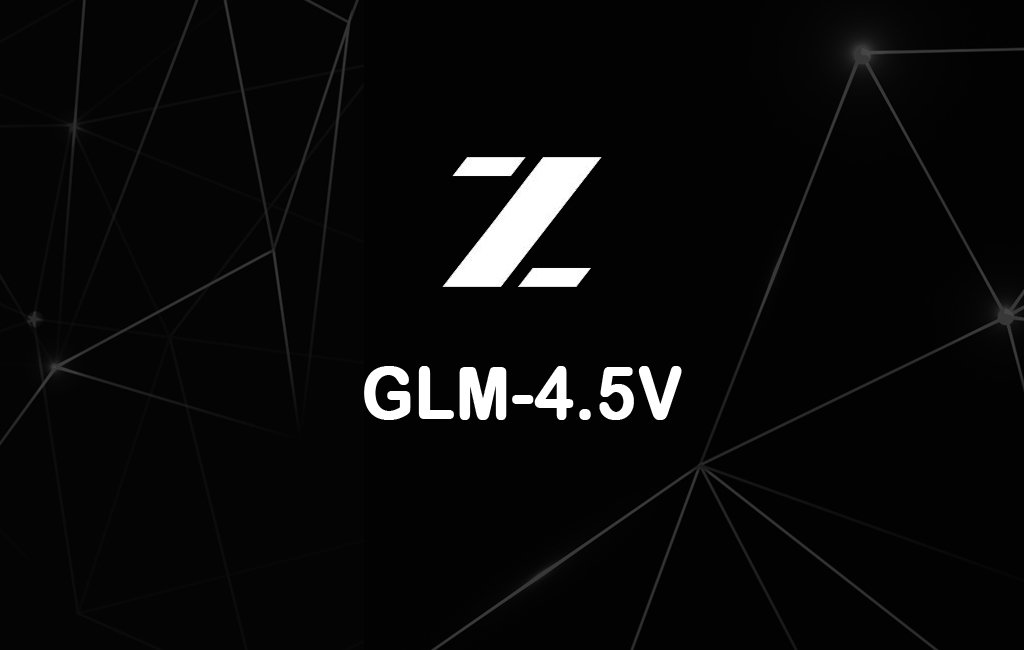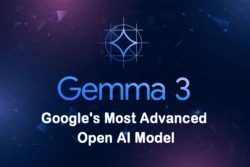The field of artificial intelligence is witnessing a transformative era, with vision-language models (VLMs) redefining how machines interpret and interact with diverse data. Released on August 11, 2025, by Zhipu AI (now Z.ai), GLM-4.5V stands as a pioneering open-source VLM, built on the 106-billion-parameter GLM-4.5-Air backbone. Its Mixture-of-Experts (MoE) architecture activates only 12 billion parameters per query, delivering exceptional efficiency without compromising performance. Licensed under MIT, GLM-4.5V enables free use, modification, and commercial redistribution, making advanced AI accessible to all.
GLM-4.5V excels in multimodal reasoning, seamlessly processing images, videos, documents, and graphical user interfaces (GUIs) through a unified hybrid vision-language pipeline. Supporting up to 64,000 tokens, it tackles complex tasks like multi-image analysis, long-video segmentation, and detailed document extraction. Its unique “Thinking Mode” toggle offers users the flexibility to switch between rapid responses and deep, step-by-step reasoning, balancing speed and precision.
This article provides a comprehensive look at GLM-4.5V’s features, performance, applications, and limitations, with an updated comparison against the latest competing models, including Claude Opus 4.1 (Anthropic), Gemini 2.5 Pro (Google), GPT-5 (OpenAI), Qwen2.5-VL-72B (Alibaba), and LLaVA-Mini (open-source). Drawing from benchmarks and real-world insights, we explore why GLM-4.5V is a game-changer in the open-source AI landscape.
Key Features of GLM-4.5V
GLM-4.5V is designed for versatility and real-world utility, building on Z.ai’s GLM series legacy. Below are its core capabilities:
1. Advanced Visual Reasoning
- Image Analysis: GLM-4.5V performs scene parsing, multi-image cross-referencing, and spatial inference, making it ideal for industrial applications like defect detection in manufacturing or remote sensing in agriculture.
- Video Processing: Leveraging a 3D convolutional encoder for temporal downsampling, it handles hours-long videos, enabling applications such as sports analytics (e.g., tracking player movements) or surveillance review.
- Spatial and 3D Reasoning: With 3D Rotational Positional Encoding (3D-RoPE), it accurately interprets 3D relationships, supporting augmented reality (AR) and robotics.
2. GUI and Automation Support
- The model reads desktop and mobile interfaces, recognizes icons, and automates tasks like generating macros or enhancing accessibility tools (e.g., advanced screen readers). It can replicate UI designs or execute workflow commands from screenshots.
3. Document and Chart Comprehension
- GLM-4.5V extracts structured data from charts, infographics, and lengthy documents (e.g., research papers, legal contracts), preserving layout and context. This is invaluable for data analysts and researchers.
4. Grounding and Localization
- It localizes objects with bounding boxes in a normalized [0-1000] scale using special tokens like
<|begin_of_box|>and<|end_of_box|>, enhancing applications in quality control and robotics.
5. Efficiency and Deployment
- The MoE architecture ensures low-latency, high-throughput inference, deployable on consumer hardware (e.g., 4-bit quantized on high-memory M-series chips). It supports frameworks like vLLM and SGLang.
- Training Methodology: Combines massive multimodal pretraining, supervised fine-tuning, and Reinforcement Learning with Curriculum Sampling (RLCS) for robust reasoning.
6. Dual-Mode Operation
- Non-Thinking Mode: Delivers fast, efficient responses for simple queries.
- Thinking Mode: Engages step-by-step reasoning for complex tasks, reducing errors in high-stakes scenarios.
GLM-4.5V is accessible via Z.ai’s API ($0.6/M input, $1.8/M output tokens), Hugging Face, ModelScope, or local deployment. An open-source desktop assistant app further supports tasks like screenshot and video analysis.
Performance and Benchmarks
GLM-4.5V achieves state-of-the-art (SOTA) performance among open-source VLMs of its scale, excelling in 41–42 multimodal benchmarks, including MMBench (81.1), AI2D, MMStar (58.7), and MathVista. It matches or surpasses proprietary models in STEM question answering, chart comprehension, GUI operations, and video understanding, with over 92% accuracy in visual defect analysis. It outperforms Qwen2.5-VL-72B in 18 benchmark tasks despite using fewer active parameters.
Real-world evaluations, such as ranking 66th out of 21,000 in China’s GeoGuessr challenge, demonstrate its robustness in visual reasoning. User feedback on platforms like X praises its cost-effectiveness (~$0.05/M inputs on decentralized platforms) and transformative impact on AI projects.
Applications Across Industries
GLM-4.5V’s multimodal capabilities unlock diverse use cases:
- Industrial: Defect detection in manufacturing, quality control, and remote sensing for agriculture or urban planning.
- Automation: Robotic process automation (RPA), GUI command execution, and webpage code generation from screenshots.
- Research and Education: Summarizing complex documents, extracting chart data, and solving image-text problems for K-12 education.
- Content Creation: Video analysis for creators, UI design replication (e.g., generating HTML/CSS from screenshots).
- Accessibility: Enhanced screen readers and visual aids for the visually impaired.
Early adopters report significant efficiency gains, such as faster defect analysis in manufacturing and proactive task execution in agentic workflows.
Limitations
Despite its strengths, GLM-4.5V has notable limitations:
- Text-Only Performance: Optimized for multimodal tasks, it lags behind text-only models like GLM-4.5 in pure text Q&A.
- Formatting Issues: About 15% of frontend code tasks (e.g., raw HTML output) exhibit formatting errors, and ~8% of complex reasoning tasks (>32k tokens) show repetitive patterns.
- No Audio Support: Lacks native audio input processing, limiting some multimodal applications.
Comparative Analysis: GLM-4.5V vs. Latest Competitors
To contextualize GLM-4.5V’s position, we compare it against the latest models as of August 13, 2025: Claude Opus 4.1 (Anthropic), Gemini 2.5 Pro (Google), GPT-5 (OpenAI), Qwen2.5-VL-72B (Alibaba), and LLaVA-Mini (open-source). Data is drawn from standardized benchmarks (MMBench, MMMU, MMStar), architectural insights, and user evaluations.
| Feature | GLM-4.5V (Z.ai) | Claude Opus 4.1 (Anthropic) | Gemini 2.5 Pro (Google) | GPT-5 (OpenAI) | Qwen2.5-VL-72B (Alibaba) | LLaVA-Mini (Open-Source) |
|---|---|---|---|---|---|---|
| Parameters (Active/Total) | 12B / 106B (MoE) | ~100B+ (Dense, est.) | Sparse MoE (~2T total) | ~1.8T (Dense) | 72B | Efficient (est. 13B, one vision token) |
| Context Length | 64k tokens | 200k tokens | 1M tokens | 128k tokens | 128k tokens | Variable (image/video-efficient) |
| Multimodal Inputs | Images, Videos, Documents, GUIs | Text, Images | Text, Images, Audio, Videos | Text, Images, Audio, Videos | Text, Images, Videos | Text, Images, High-Res, Videos |
| Key Strengths | Video/GUI/Chart analysis; Open-source; Efficient MoE | Coding; Ethical alignment; Agentic tasks | Massive context; Multimodality; Speed | Advanced reasoning; Adaptive modes; Voice | Chart/OCR; Bilingual; Long videos | Efficient; One-token vision; Grounding |
| Benchmarks (MMBench/MMMU/MMStar) | 81.1 / 47.2 / 58.7 | ~86 / 55 / N/A | ~82 / 50 / 40 | ~89 / 70 / 64 | ~78 / 53 / 50 | ~81 / 49 / 52 |
| Open-Source | Yes (MIT License) | No | No | No | Partial (Weights available) | Yes |
| Pricing (API Input/Output per M Tokens) | $0.6 / $1.8 | $15 / $75 | $1.25 / $10 (up to 200k) | $1.25 / $10 | Varies (Free tier limited) | Free (Local) |
| Limitations | Text-only lags; Occasional repetition | High cost; No video | Long-context hallucinations | Ethical refusals; Costly | Weaker non-Chinese tasks | Smaller context; Less versatile |
Analysis
- GLM-4.5V: Shines in open-source accessibility, efficiency, and multimodal tasks like video/GUI analysis. Its cost-effectiveness and local deployment make it ideal for enterprises prioritizing data sovereignty.
- Claude Opus 4.1: Excels in coding, ethical alignment, and agentic tasks but lacks video support and is costly.
- Gemini 2.5 Pro: Offers massive context and native multimodality, but long-context hallucinations remain a challenge.
- GPT-5: Leads in reasoning, creativity, and multimodal breadth, with adaptive modes akin to GLM-4.5V’s Thinking Mode, but ethical refusals and high costs limit accessibility.
- Qwen2.5-VL-72B: Strong in bilingual tasks and chart/OCR processing, though less competitive in non-Chinese contexts.
- LLaVA-Mini: Efficient for image/video tasks with one-token vision encoding, but its smaller context limits versatility.
GLM-4.5V’s open-source nature and performance rival proprietary models in specific domains, offering unmatched value for developers and researchers.
Conclusion
GLM-4.5V redefines open-source multimodal AI, challenging proprietary giants like Claude Opus 4.1, Gemini 2.5 Pro, and GPT-5 with its efficiency, versatility, and accessibility. Its ability to handle complex visual tasks, coupled with local deployment options, empowers industries from manufacturing to education. Despite text-only limitations, its impact is profound, fostering innovation and data sovereignty. Developers can explore GLM-4.5V on Hugging Face, Z.ai, or via its API—dive in and unlock its potential today.







